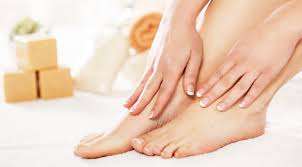Understanding the Anatomy of Foot Bones
The human foot is a masterpiece of design—containing 26 bones, over 30 joints, and a network of ligaments and tendons working in harmony to support every step we take. Knowing how these elements work together can help you appreciate the importance of foot care, especially if you're managing conditions like diabetes where foot health is critical. At DiabeticShoe.in, our specialized footwear is crafted with this very anatomy in mind to enhance comfort, reduce strain, and promote foot safety.
The Three Main Sections of the Foot

The foot is anatomically divided into the forefoot, midfoot, and hindfoot. Each segment plays a distinct role in mobility and balance.
Forefoot
-
Phalanges: These are the bones of the toes. Most toes have three phalanges—proximal, middle, and distal—except the big toe, which has two.
-
Metatarsals: Five long bones that run from the arch to the toe joints. They assist with weight distribution and propulsion while walking.
Midfoot
-
Navicular: A boat-shaped bone on the inner side that links the talus to the cuneiforms.
-
Cuboid: Located laterally, it adds stability and connects the forefoot to the hindfoot.
-
Cuneiforms: Medial, intermediate, and lateral bones that bridge the navicular with the first three metatarsals.
Hindfoot
-
Calcaneus: The heel bone, largest in the foot, crucial for bearing body weight.
-
Talus: Sits atop the heel bone and forms the lower ankle joint, enabling upward and downward movement.
Understanding these segments helps when selecting supportive footwear—especially from our men’s collection or women’s collection, where anatomical comfort is built into the design.
Ligaments and Tendons: The Unsung Heroes
While bones form the framework, ligaments and tendons ensure stability and movement.
-
Plantar fascia: A thick band that supports the arch and absorbs shock.
-
Deltoid ligament: Helps stabilize the ankle on the inner side.
-
Achilles tendon: Connects calf muscles to the heel; essential for walking and jumping.
-
Tibialis posterior tendon: Maintains the foot’s arch and supports dynamic motion.
Footwear that accommodates these structures—especially with features like arch support, heel padding, and shock absorption—is vital. Explore these benefits in our Features section to see how our shoes cater to anatomical needs.
Common Foot Bone Issues
Even healthy feet can face structural issues, more so for those with diabetes or active lifestyles.
Fractures
-
Jones fracture: A break at the base of the fifth metatarsal, usually from twisting injuries.
-
Stress fractures: Tiny cracks from repetitive stress, common among athletes and walkers.
Bunions

These are deformities at the joint of the big toe, often caused by tight shoes or genetics. They may become painful over time and may require surgical correction if severe.
Plantar Fasciitis

Inflammation of the plantar fascia, leading to heel pain, especially in the morning. Supportive footwear with cushioned soles—like those at DiabeticShoe.in—can provide relief and prevent recurrence.
Keeping Foot Bones Strong and Functional

Strong foot bones and flexible joints lead to better posture and mobility. Here are some tips to maintain healthy feet:
-
Wear anatomically designed footwear that supports your foot structure and relieves pressure points. Our men’s diabetic footwear and women’s shoes are excellent choices.
-
Exercise regularly with foot-specific stretches like toe curls and ankle rolls to improve circulation and strength.
-
Control your weight to reduce excess stress on your feet.
-
Warm up before intense activities to prevent ligament and tendon injuries.
Let Your Feet Speak Comfort
Understanding the anatomy of your feet isn’t just science—it’s a step toward mindful self-care. Whether it’s choosing the right footwear, identifying symptoms early, or improving posture, your feet deserve attention. At DiabeticShoe.in, we craft footwear that supports this intricate design—helping you walk easier, live better, and protect what carries you through life. Browse our features to discover how we incorporate anatomical knowledge into every pair. Your next step starts here.








